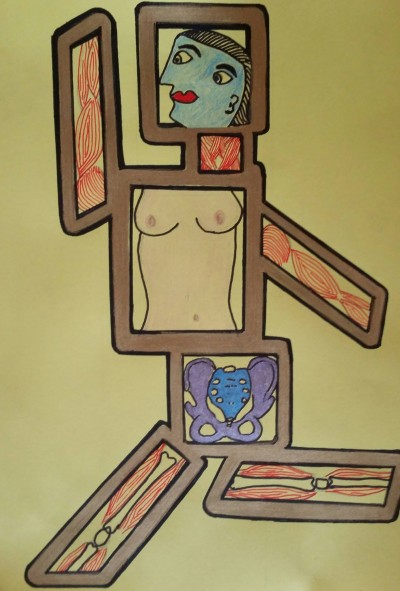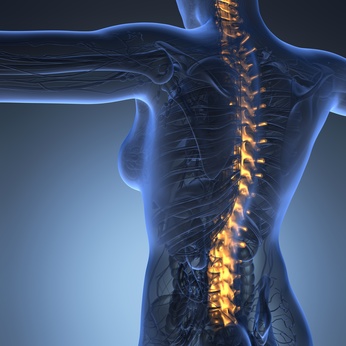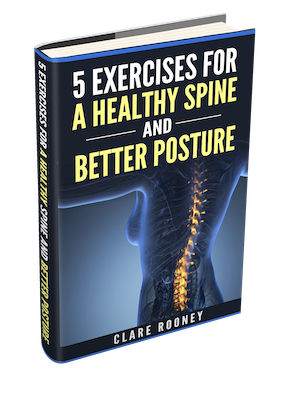Is Your Body in Alignment?
In today’s blog I am going to look at an extremely foundational issue that affects everybody who has a body. I am particularly addressing those who wish to begin a training program, perhaps for the very first time, or those who find themselves getting repeatedly injured from exercising. This topic also affects those who have plateaued with respect to their goals in physique enhancement or maybe performance.
Suns out, Guns out!!
Its Summer time the sun is shining and you decide you wish to get active and out there! You go to your garden shed and wheel out your old bicycle that’s been laying there unused for quite some time. The chain is a little rusty, the front wheel looks slightly buckled, the back tire is flat and the saddle height is stuck too low and can’t be adjusted. Who cares you are motivated! And that motivation is going to be enough to allow you to ride that bike fast and easy because you made a commitment to getting fit. You hop on your rusty bike and off you go……..
Does this sound like a winning scenario to you? In reality this is what millions of people do every day in their quest to get fit and shape up. They take the vehicle of their life experience ( their body’s) and dive straight into exercising without checking first whether that vehicle is road worthy or not. The check list I will take you through today relates to alignment of various body structures. If these structures are out of alignment then injury risk is greatly enhanced, your body’s movement strategy will be very inefficient, you will recruit muscles in a way that perpetuate imbalance and the process of achieving your goals becomes a very slow process indeed. You can waste years of training when you don’t lay the correct foundation.
So let’s take a look at 6 markers of alignment in the human body and see how they may affect performance and function.
1. Head Carriage
The average weight of a human head is between 4.5 to 5kg. If that head starts to move forward and out of alignment it can create problems like neck and upper back pain, respiratory issues, arthritis, disc degeneration and pinched nerves, lower back pain, jaw pain and mood disorders. Your head should sit on top of your thorax much like a golf ball sits on a tee. For every inch that it moves forward that’s an extra 4.5 kg of pressure on your neck musculature and discs. If you have a forward head posture of even 3 inches that’s almost 14 extra kilos of pressure. The average client I test has about 2 inches of forward head posture on initial assessment. I have had some clients with 4 or more inches forward and all of them had back problems!
Why is head carriage important apart from wear and tear on discs and it being a literal pain in the neck? Where the head goes the spine follows and where the spine goes the body follows. When that spine is out of alignment multiple muscle imbalances ensue that create even more pain and dysfunction. The bottom line is that you cannot have a healthy spine with a forward head posture. A healthy spine is foundational for healthy, efficient and effective movement.
2. Atlas Alignment
Your atlas is the very first vertebra that your cranium or head sits on and it plays a huge role in postural health, musculoskeletal balance, proprioception (awareness of where your body is in space) and overall nervous system health. One of the classic symptoms of atlas misalignment is uneven weight bearing in the legs or apparent leg length disparity. Visually one shoulder may be higher than the other. If the atlas is out of alignment there is a chain reaction that puts the entire skeletal system out of alignment. One of the things that happens is that your craniosacral pump is compromised. The entire Central nervous system is bathed in cerebrospinal fluid and movement of this fluid is essential to optimal nervous system health. If this pump is “off” or not working optimally you can feel dizzy, very tired and even get panic attacks as your sympathetic (fight or flight) nervous system becomes overloaded.
I have had a history of chronic atlas subluxation and have experienced all of these symptoms. Correct atlas alignment is absolutely foundational for overall health. At least 80% of the clients I test have signs and symptoms of atlas misalignment.
3. Rib Cage Placement
Not many people talk about this topic unless of course you are part of the Pilates world. In Pilates we draw a lot of attention to rib cage placement and with good reason. If the rib cage is correctly aligned it is nestled smoothly along the spinal column and does not protrude. A rib cage that’s sticking out, as is very often seen among bodybuilders, is a sign of a body that is not integrating correctly. The diaphragm has a primary function in respiration in order to change the volume and pressure in the chest cavity and allow breathing to occur. It has a secondary function in stabilisation. This is one of the reasons that cueing the breath is such an important part of being able to stabilise load bearing exercise. When I see a protruding rib cage I know the client is not breathing deeply or optimally. It’s yet another sign of an individual being locked in a fight or flight response. What is one of the first things to be affected when you get a bad fright? The answer my friends is your breathing.
4. Spinal Curvature
This is a massive topic so I will try to be brief. Your spine has a natural “S” shaped curve. If this curve becomes overly flattened in a given area or overly curved in another your ability to bear load is seriously affected, disc degeneration is almost guaranteed and your ability to generate force effectively is greatly reduced. Your body works of a hierarchy of importance with Survival being number 1 on the list and looking great naked being way down the list. When the spine is out of alignment (front to back, laterally with scoliosis or rotationally) its ability to accommodate load is dramatically reduced. The intelligence of the system knows it must protect the central nervous system (brain and spine) and so it will not allow you to lift greater loads or generate a lot of power no matter how mentally tough you are. For this reason I test all of the spinal curvatures in a client in all planes so that their exercise program can be designed to optimise alignment. All programs that follow are now moving the client forward instead of adding more stress to an already stressed system.
5. Pelvic Alignment
The Pelvis has been described as “The Rock upon which the body is built”. If the pelvis is not aligned correctly all structures above e.g. lower back and shoulder girdle, will reflect and be affected by this and all structures below aka your legs, knees and feet will be affected. Both male and female pelvises have a slight tilt forward. The norm for males is 4-7 degrees and for females its 7-10 degrees. The tilt forward on each side of the pelvis should be the same. There are several muscle groups that affect pelvic tilt, most obviously the buttocks, hamstrings, hip flexors, low back and abdominals. Imbalances in these muscle groups can lead to less than optimal pelvic alignment. So if you have an excessively forward tilted pelvis then every time you squat you may be generating the force to execute the exercise largely from your quads and wonder why your glutes and hamstrings remain a weak body part.
If your pelvis is excessively tucked under the chances are that you have a flat back and your injury risk for disc subluxation in the lower back will be high. Lob sided alignment of the pelvis one side versus the other is a red flag for sacro-iliac joint dysfunction. If you have this condition then unilateral exercise like lunges and split squats will be contra-indicated for you (i.e. unsuitable). Some tri-athletes and other long distance runners have chronic knee and foot issues that actually are being caused by an unstable or less than optimally aligned pelvis. You can have all the fancy orthotics and running shoes that money can buy but if the source of these issues is your pelvis then these tools will not help you.
6. Alignment and Weight-Bearing in the Feet
The feet are often forgotten in many exercise modalities – that is until we get an injury like a sprained ankle or Plantar fasciitis. The feet are influenced by all structures above like the pelvis, lumbar spine, head and neck. If your atlas is out of alignment it is very unlikely that you have even weight bearing in your feet , which over time can lead to something like an ankle sprain.
The feet also need to be addressed in and of themselves. How many times have you hit the gym and done a series of exercises just for your feet? Not many people do. In classic Pilates studio work the feet are the first component to be trained. Why? Force generation in the body happens from the ground up, so if your feet are not aligning and weight bearing properly then it’s not going to get much better from there.
What do I look for when assessing the feet? I look for excessive leaning to the inside or outside of the foot, excessive load bearing to the fore foot or heel, ankle mobility and the state of health of the arches of the feet. Fallen arches are very common and may indicate endocrine (hormonal) dysfunction. You can learn a lot about the body by simply looking at the feet. In my book (available here) I have a whole section on training the feet for better function.
So before you decide to sign up for that boot camp or take up jogging ask yourself ;
Is my body aligned and ready for the stress, load bearing and impact of exercise?
The chances are very high that you would benefit from a top to toe assessment from a professional well versed in biomechanical health.
That rusty, buckled bicycle I spoke of earlier in this blog will not correct itself as you ride it, neither will your body. Get balanced first then your training will move you forward. Skip this step and all of your training will copper-fasten your dysfunctions and leave you plagued with injuries. If your Body could choose which scenario do you think it would prefer?
For more information on Biomechanical Assessment, Corrective exercise and Pilates just click the links.
Image by Clare Rooney







